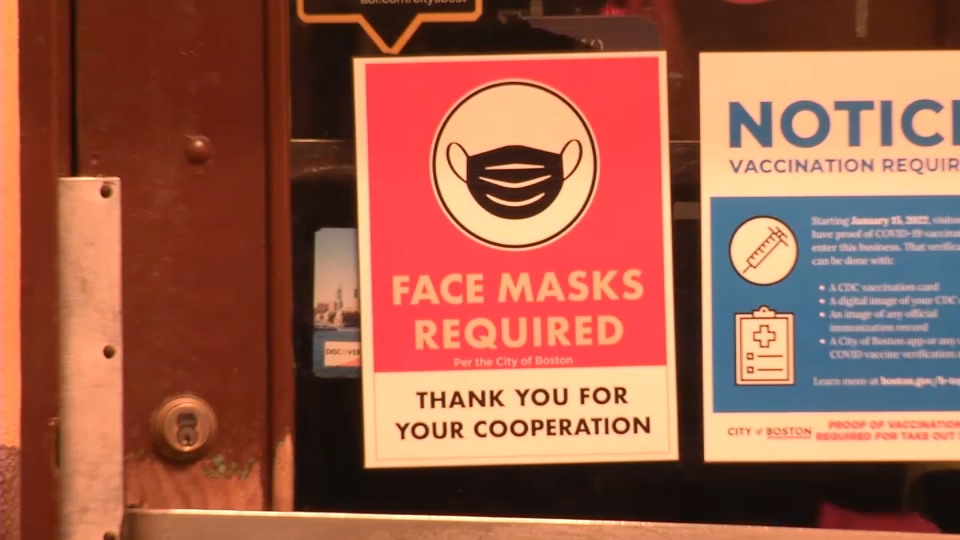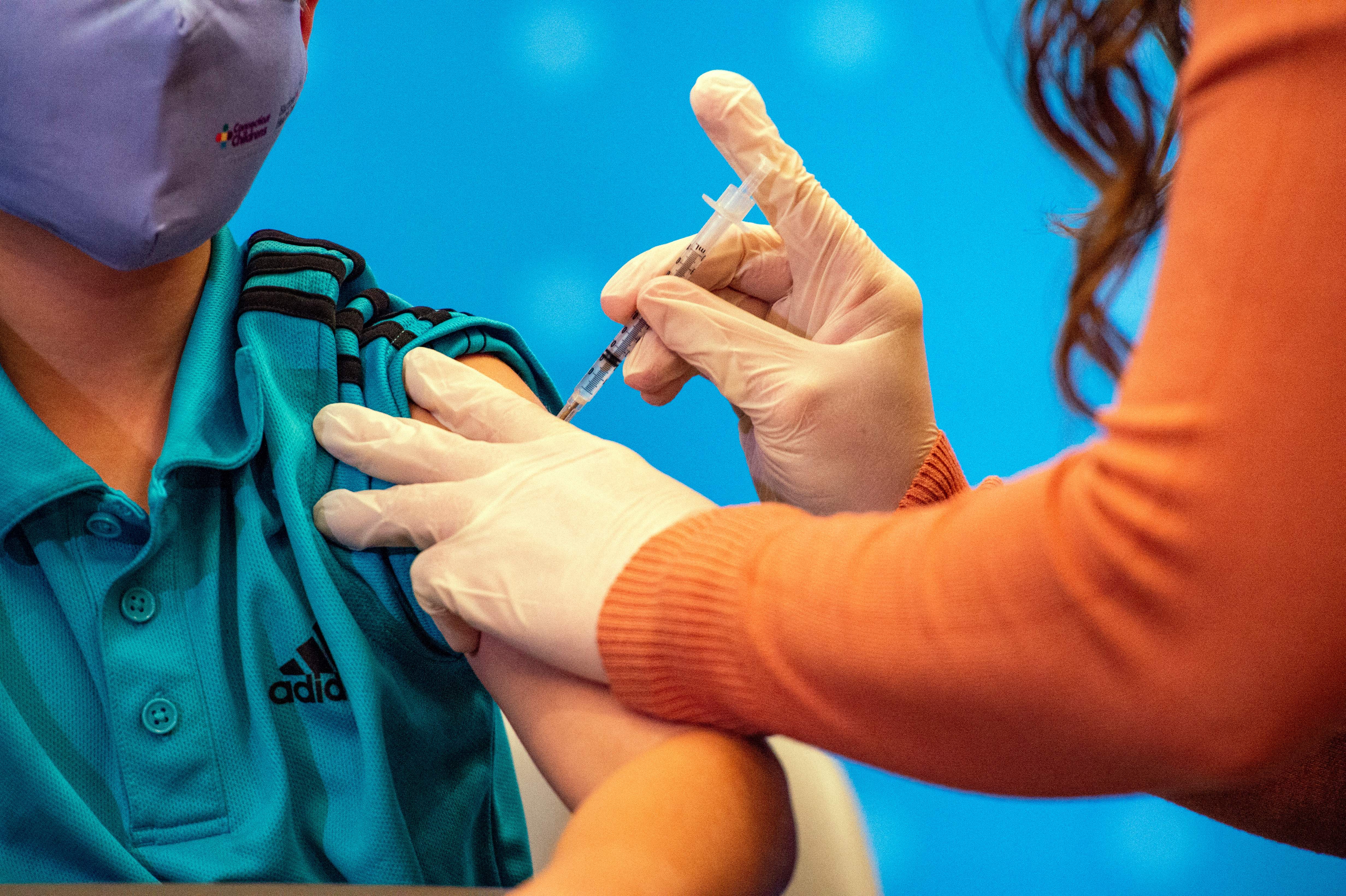With the BA.2 omicron subvariant continuing to spread across Massachusetts, Boston and the U.S., what symptoms should you be watching for?
The “stealth omicron” subvariant has only been the dominant strain of COVID in the United States for less than a month, but the Centers for Disease Control and Prevention now believes that it is responsible for more than 80% of new cases of the virus.
According to the latest updated estimates from the CDC, it is believed that the BA.2 subvariant is responsible for 85.9% of new COVID infections in the United States over the last week. In some parts of the country, that number is even higher, with more than 92% of cases in New York and New Jersey, the CDC says.
In New England, the CDC says that 90.3% of cases are believed to be linked to the subvariant. Three weeks ago, the BA.2 subvariant made up only about half of cases, according to the department’s estimates.
Get Boston local news, weather forecasts, lifestyle and entertainment stories to your inbox. Sign up for NBC Boston’s newsletters.
That rapid growth in subvariant cases is part of a trend of increasing cases in the state of Massachusetts. State health officials reported almost 2,000 new COVID-19 cases Wednesday and one new death. The state's seven-day average positivity rate rose to 3.48% Wednesday, compared to 3.42% on Tuesday.
"I would call it a bump in cases," Dr. Shira Doron of Tufts Medical Center said.
But she said now that more people are testing themselves at home, it's difficult if not impossible to get an accurate case count. And for that reason, she said percent positivity probably isn't a meaningful number anymore.
"You know, I think we feel that amongst friends and familywe are hearing about more infections, I'm seeing more of our employees test positive," Doron said. "We are not feeling that so much in terms of increases in hospitalizations, although I would say that it's plateaued, so the decrease has not continued. That may be reflective of this BA.2 phenomenon itself. The increase in wastewater levels and cases has been about three weeks, and that may not be enough given that case by case, omicron is less severe than delta. You may need to see really a bigger increase in cases before we start to see it spill over into hospitalizations."
BA.2 has several key mutations, with the most important of those occurring in the spike protein that studs the outside of the virus. Those mutations are shared with the original omicron, but BA.2 also has additional genetic changes not seen in the initial version.
According to several health experts, BA.2 appears to be more transmissible than omicron.
Ultimately, officials say BA.2's dominance was expected and it's expected that some other COVID variant will take its turn, too. That doesn't necessarily exacerbate community risk.
"It's very clear we're seeing a bump. How high the bump will go, we're only going to know over the next several weeks," said Dr. Daniel Kuritzkes, chief of infectious disease at Brigham and Women's Hospital. "Even if you look at the national data on the CDC trend map, it's showing an uptick now in cases nationwide that's really being led by the increase in cases in the Northeast. We can probably look forward to a further increase in cases in Massachusetts."
White House chief medical advisor Dr. Anthony Fauci said BA.2 is about 50% to 60% more transmissible than omicron, but it does not appear to be more severe.
"It does have increased transmission capability," Fauci said on a recent edition of ABC's "This Week." "However, when you look at the cases, they do not appear to be any more severe and they do not appear to evade immune responses either from vaccines or prior infections."
So with spread continuing to climb, what should you be watching for?
Northwestern's Dr. Michael Angarone, an associate professor of medicine in infectious diseases, said the symptoms for BA.2 are similar to those seen in many COVID infections.
"So this is the same virus, so SARS Coronavirus 2, so we're seeing the same symptoms," he said.
Still, NBC News reported symptoms associated with BA.2 seem to largely mirror a small number of symptoms commonly reported in omicron infections. Those include:
- Cough
- Fatigue
- Congestion
- Runny Nose
Anecdotal reports have suggested that dizziness could be a possible symptom, but they are so far unfounded.
"We will have to wait and see what exactly that means," said Dr. Rachael Lee, an associate professor of infectious disease and a health care epidemiologist at the University of Alabama at Birmingham. Infections in general can cause dizziness if people become dehydrated, she said.
"When we are sick and our body is taking care of the infection, we can get things like fever," Lee said. "If you have fever, in particular, and if you're sweating a lot, you're losing a lot of fluid."
For some people, coronavirus causes mild or moderate symptoms that clear up in a couple weeks. For others, it may cause no symptoms at all. For some, the virus can cause more severe illness, including pneumonia and death.
Most vaccinated people either have no symptoms or exhibit very mild symptoms, according to health officials, and the virus rarely results in hospitalization or death for those individuals.
Still, omicron presented a shift in common symptoms for many.
Dr. Katherine Poehling, an infectious disease specialist and member of the Advisory Committee on Immunization Practices, told NBC News in January that a cough, congestion, runny nose and fatigue appear to be prominent symptoms with the omicron variant.
But unlike the delta variant, many patients were not losing their taste or smell. She noted that these symptoms may only reflect certain populations.
The symptoms COVID infections, according to the CDC, include:
- Fever or chills
- Cough
- Shortness of breath or difficulty breathing
- Fatigue
- Muscle or body aches
- Headache
- New loss of taste or smell
- Sore throat
- Congestion or runny nose
- Nausea or vomiting
- Diarrhea




